Search Results
Fine Jewelry University Articles matching: “Emerald gem”
Showing only FJU Article results. Click here to show all results.
Fine Jewelry University (Show All FJU Articles)
-
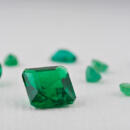
Gem in the Spotlight: Emerald
Springtime exudes life, full of bright colors and renewed energy. Emerald, May’s gemstone, captures this enthusiasm for life in rich elegance. This precious gemstone has been revered for … mineral family (along with morganite and aquamarine) and are valued for their rich green color. The intensity of an emerald‘s hue depends on the presence of chromium and vanadium in the crystal structure. Emerald’s Mohs hardness rating is 7… a moderately refractive gemstone. Its specific gravity ranges from 2.65 to 2.75. One of the distinctive features of emeralds is that they often contain inclusions. Sometimes these inclusions are referred to as jardin (the French word for …
-
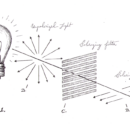
The Magic of Polarized Light
…exactly, and why is my jeweler writing about it? It turns out that polarized light is actually a very useful tool in gemology, and in this article we’ll show you why. What Is Polarized Light? Light from almost any light source travels in… directions, and the vibrations around each ray of light are random. This is called unpolarized light. In the gemological world, this would be any light source that we use on a regular basis (e.g. overhead reflected light or a daylight …
-
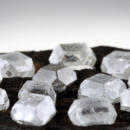
Is a Lab Grown Diamond Right for Me?
Picking a diamond for your engagement ring is a big decision. For most of us, buying a diamond is a significant financial undertaking, and we want to … grown diamond is. Of course, you don’t have to tell anyone you bought a lab grown diamond (and even experienced gemologists might not be able to tell). But, due to that misinformation we talked about earlier, most people don’t know what…. P. S. If you are considering a lab grown diamond, be sure to checkout Balance , our own collection of unique engagement rings made exclusively with
-
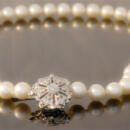
How to Clean Pearl Jewelry
… symbols of purity and chastity. But even symbols of purity get dirty from time to time. As you know pearls are produced when a mollusk secretes nacre to form a covering around a foreign body in its shell. Pearls are not as durable as gemstones produced by the heaving pressure beneath the earth’s surface. Therefore special attention should be used when cleaning them. Pearls should be the last thing that you put on and the first thing that you take off. Common personal …
-
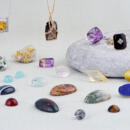
Gem in the Spotlight: Quartz
… at the title and knew). Quartz is one of the most common minerals on earth. Many quartz varieties are cut into gemstones, but some varieties are very rare. Some are ordinary like rock quartz, others are exotic like Drusy Quartz. Some …, microcrystalline and cryptocrystalline. Within each of these broad categories, the different colors of the gemstone are given different names. Below is a quick list to help you get a better handle on the vast diversity of quartz. …
-

How Are Lab Grown Diamonds Made?
…. For decades, manufacturers of synthetic gemstones tried growing diamonds like they grew rubies, sapphires, and emeralds. It failed. Then they had the idea to grow diamonds in the lab like they grew in nature. High Pressure High Temperature… to turn lead into gold, many have tried to achieve this impressive feat. We have only recently been able to produce gem quality, lab grown diamonds that are large enough to be used in jewelry. But, how is it done? Early Efforts …
-
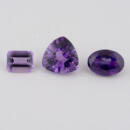
Gem in the Spotlight: Amethyst
…, help hunters, guard against contagious diseases, and control evil thoughts. Amethyst was once as valuable as emeralds and rubies until very large deposits were found in multiple places around the world. Heavily increased supply dropped … been considered a royal color, so it is not surprising that amethyst has been in so much demand throughout history. Gemology Amethyst is a variety of quartz that is colored by the presence iron and aluminum. The violet color of amethyst…
-
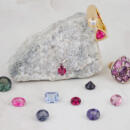
Gem in the Spotlight: Spinel
… of an action movie, but it could also be the title of this article. For years spinel has been confused with other gems and even today is often used as a substitute for similar looking stones. In recent years, spinel has started to move …own right, and we can see why. Its colors rival even the best rubies, sapphires, tourmalines, and other more popular gems. For only the 3rd time in the last one hundred years, the industry is modifying the official birthstone list. …
-
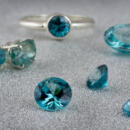
Gem in the Spotlight: Blue Zircon
Zircon may be last in the alphabet of gemstones, but it is first in sparkle. The crystal structure of zircon creates one of the liveliest displays found in …golden, saffron, and colorless. Zircon colors are pure and have that distinctive fire that sets it apart from other gems. The Gemology of Zircon Why does zircon have so much more fire then other colored gems? Zircon has a high refractive… property that refers to the ratio of the speed of light in a vacuum to the speed of light through a transparent gem. Light is bent as it moves from air to the gem material. This process breaks light into its spectral hues like a rainbow…